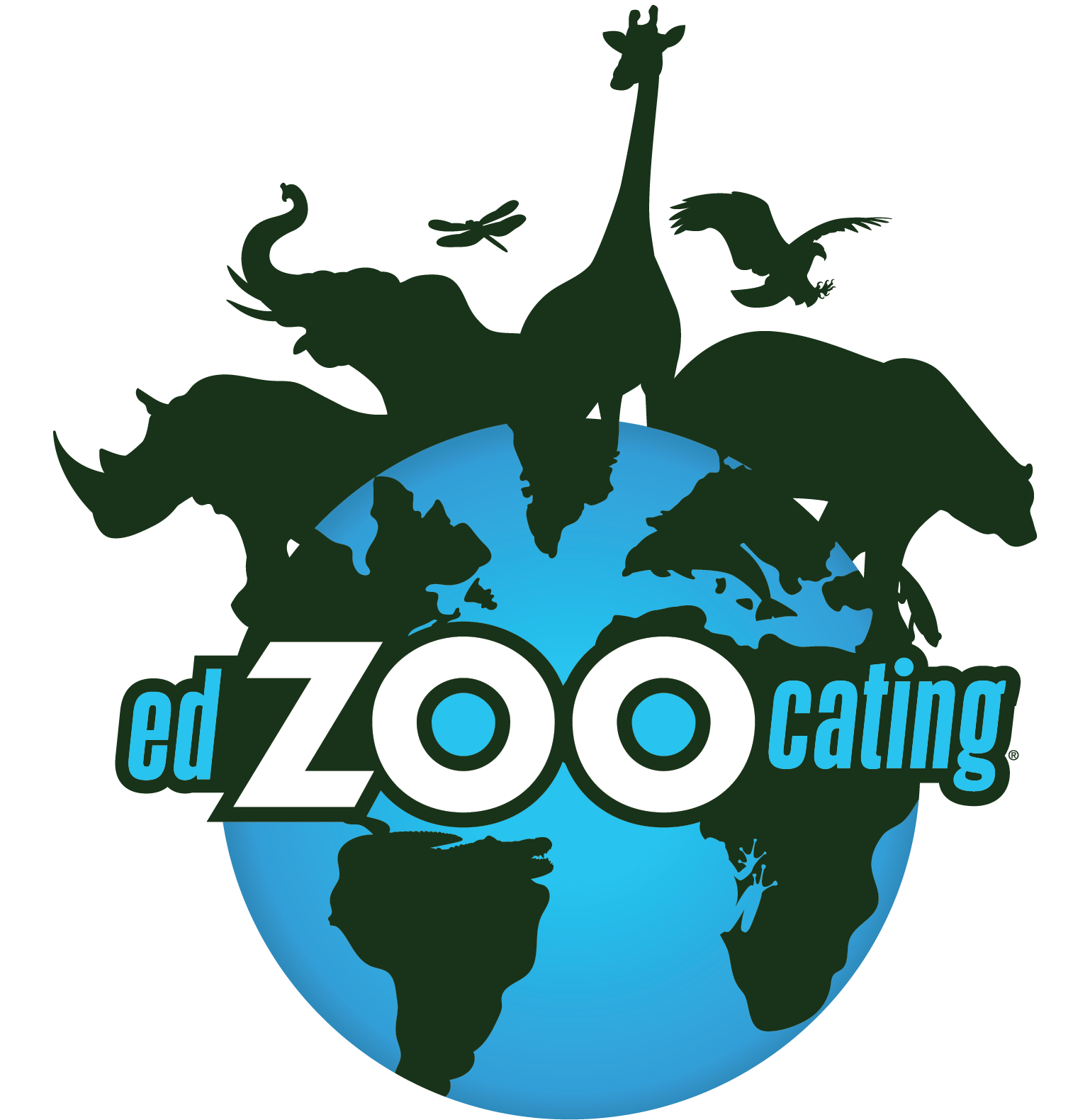Penguins

Let's Learn About Penguins
Word of the Week
Bergmann's Rule
Bergmann's Rule is a scientific theory describing how groups of warm-blooded animals are smallest near the equator and largest near the poles.
The smallest penguins live in warm weather near the equator, while the largest penguins live in Antarctic near the South Pole. Deer and bears follow Bergmann's Rule, as well.
Fast Facts
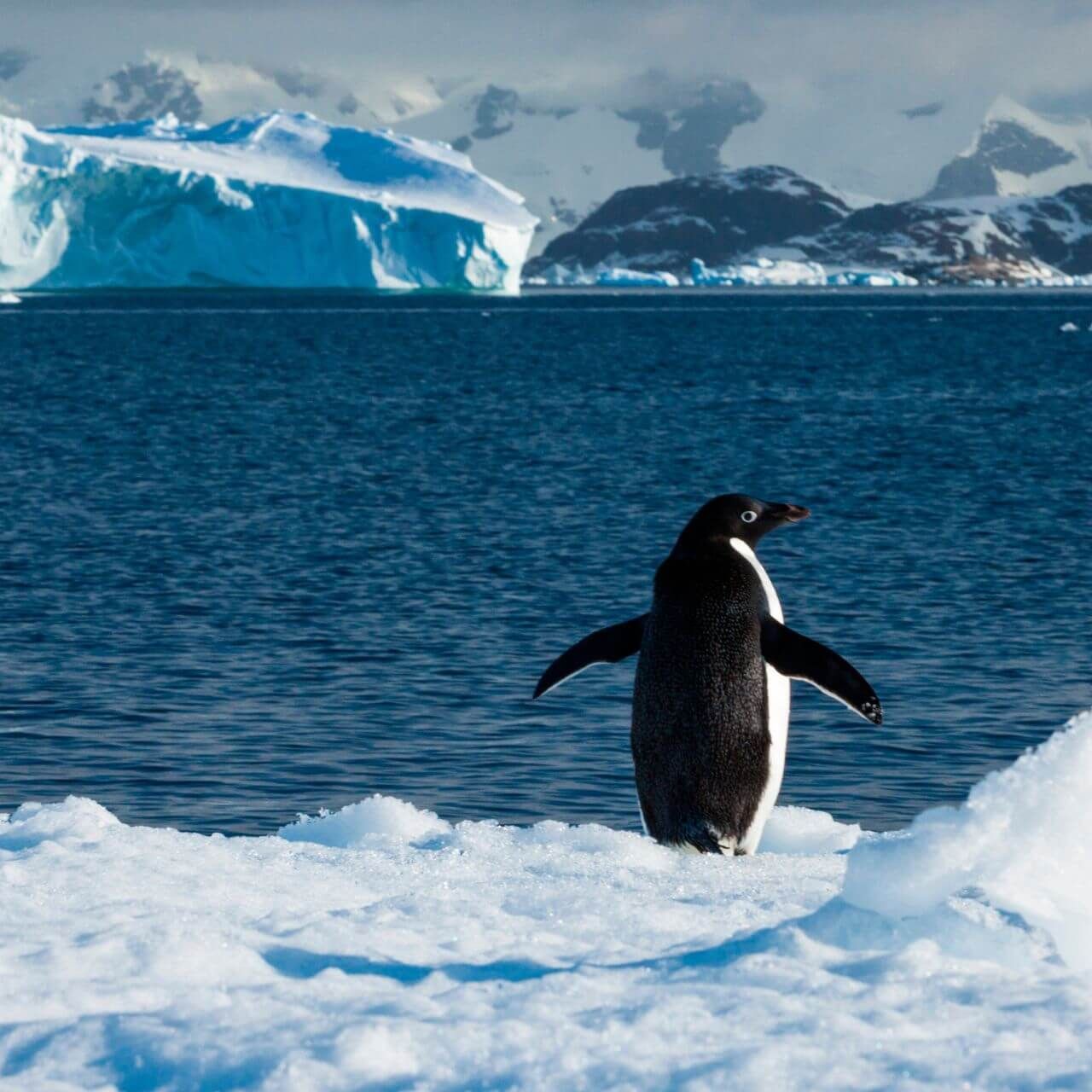
Where do penguins live?
Most penguins live in the Southern Hemisphere. They live on Antarctica, Africa, South America, Australia, and many islands.
Some penguins live in freezing climates, like emperor penguins in Antarctica. Some penguins live in warm climates, like the Galapagos penguin.
What do penguins eat?
Penguins are carnivores.
Most of their diet is fish. They also eat squid, krill, and other small animals. Penguins have backward-facing spines in their mouth and on their tongue to grasp slippery prey.
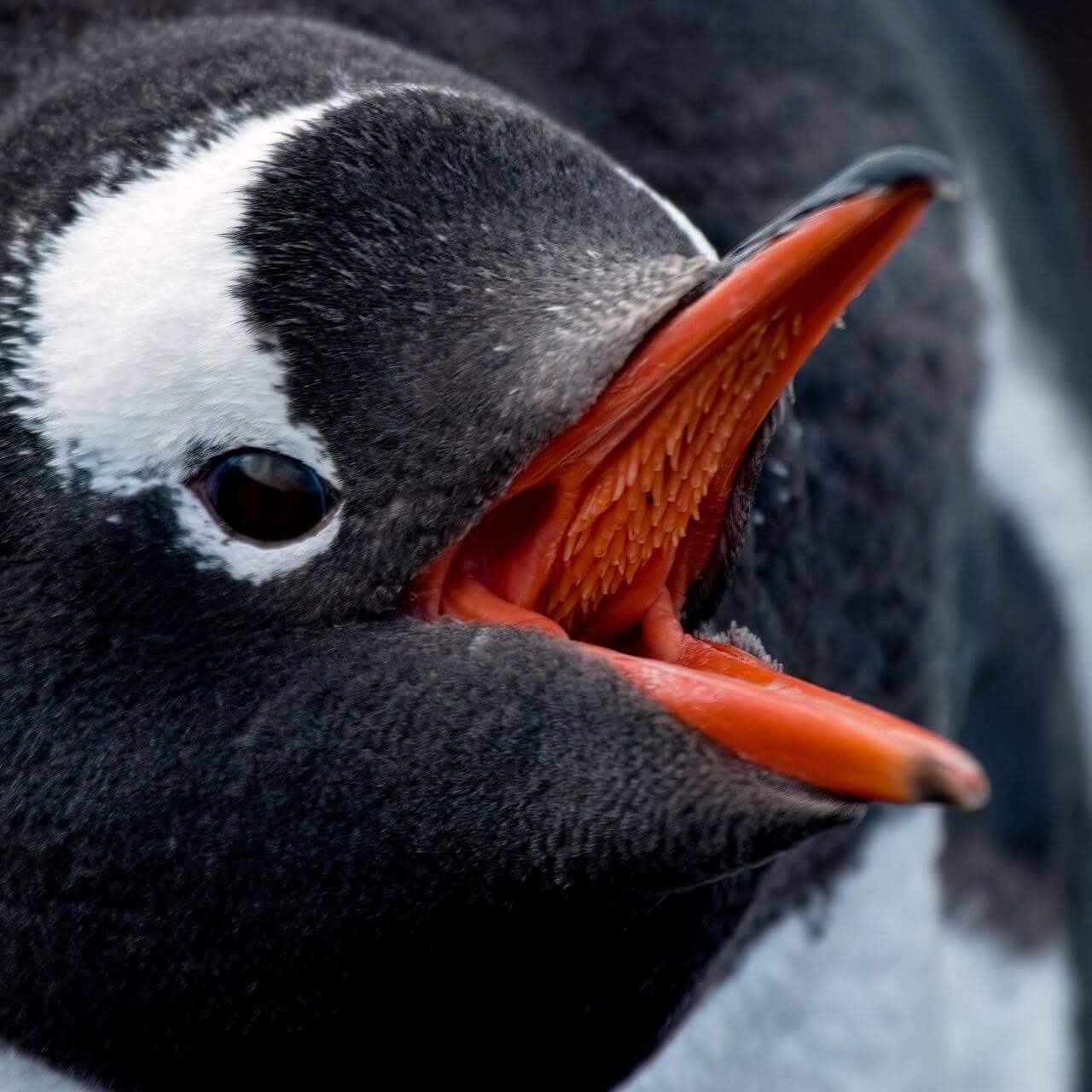
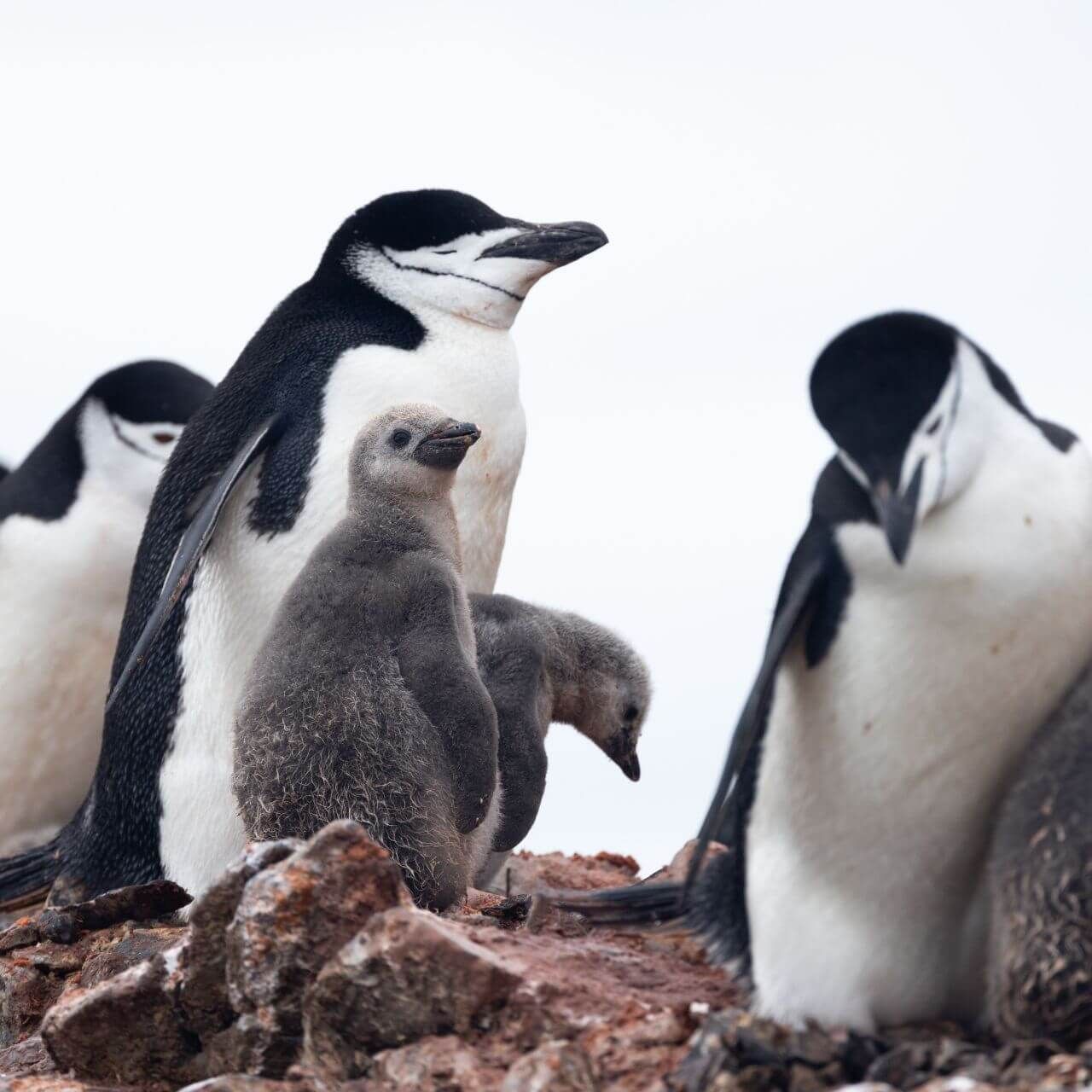
What do penguins have in common?
- Penguins are flightless.
- Penguins use their wings like flippers.
- Penguins have webbed feet.
- Penguins use countershading to avoid predators.
- Penguins have waterproof feathers.
How many penguins are there?
Scientists estimate there are roughly 18 species of penguins.
Some penguin species are endangered. Penguins are threated by climate change, habitat loss, and overfishing of their food supply.
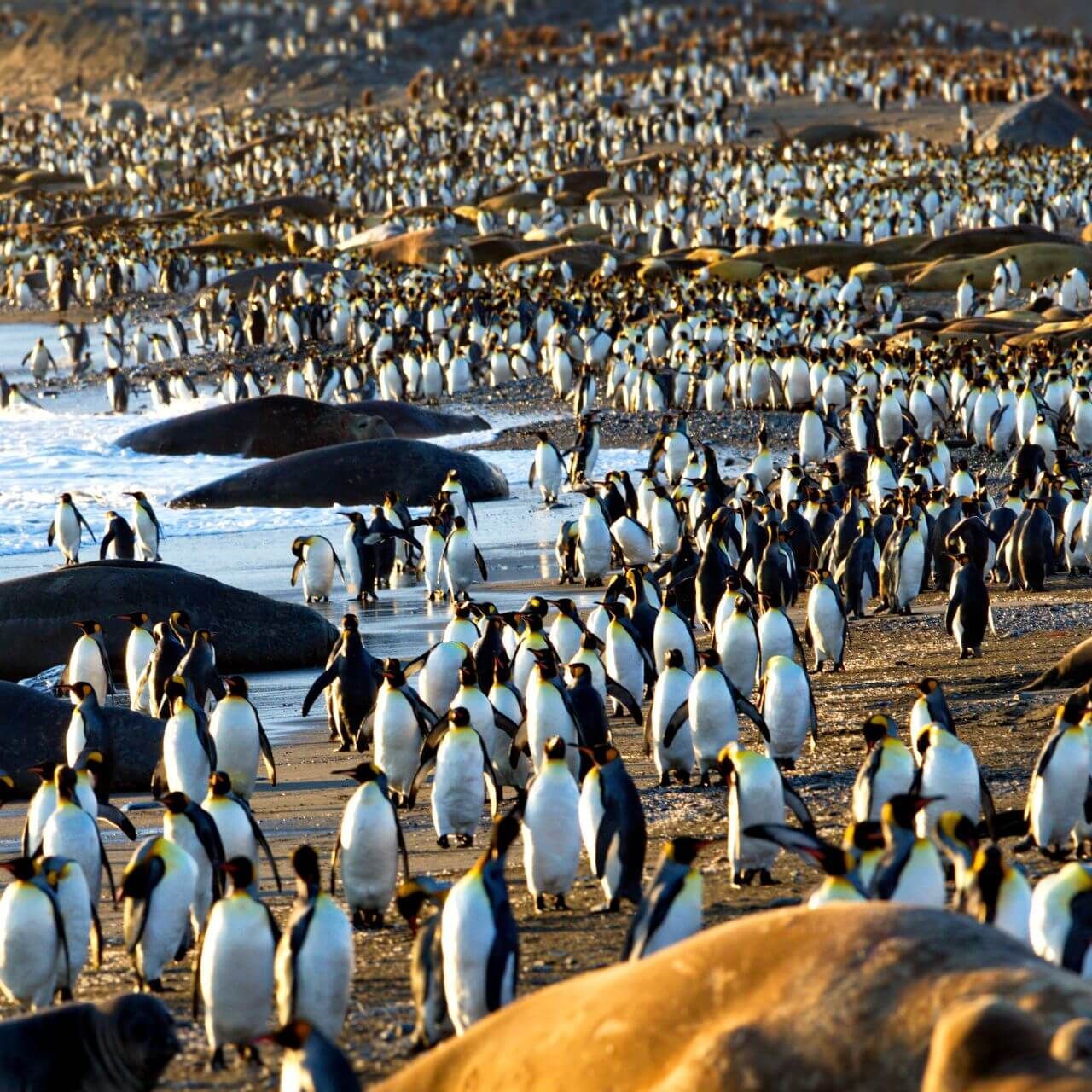
Species Spotlight
Galapagos Penguin
Spheniscus mendiculus
All penguins live in the Southern Hemisphere except one… the Galapagos penguin. Unlike penguins in cold climates, Galapagos penguins live on warm, tropical islands.
Galapagos penguins are endemic to the Galapagos Islands found hundreds of miles from South America. Unlike cold-weather penguins, Galapagos penguins have adaptations to survive in warm weather.
Galapagos penguins are small, which allows heat to escape their bodies so they do not overheat. They are the second smallest species of penguin behind the little penguin. They rest in the shade and pant (similar to a dog) on hot days. They also shade their feet with their body when standing in the sun.
While the air might be warm, the water around the Galapagos Islands is cold. The cool currents bring nutrients, fish, and other animals that penguins eat. Like all penguins, Galapagos penguins swim with flipper-like wings to chase after fish and escape predators.
In water, Galapagos penguins are preyed on by sharks, sea lions, and seals. They have predators on land, as well, including hawks, owls, and invasive species like cats and rats.
Climate change also threatens Galapagos penguins as it changes ocean temperatures and currents. Warming temperatures and unreliable food are two of the main threats to Galapagos penguins.
BRAIN BLAST
Make a list of other unique animals that live in the Galapagos Islands. Do they also have unique traits? If so, what?
Conservation Corner
Real-Life "Happy Feet"
Like all ecosystems, the ocean has a balance of prey and predators.
Tiny plant-like algae are eaten by small animals, like krill and small fish. Krill and small fish are eaten by bigger fish. Bigger fish are eaten by sharks, and so on.
If we remove animals from the ocean, it will quickly fall out of balance.
Penguins are part of the ocean’s balance, as well. They are food for predators like sharks and seals. Penguins are also predators of krill and small fish, like sardines and anchovies.
Many other animals also depend on krill and small fish, including people. Krill is used to make vitamins and food for aquarium and farm animals. Fish, like sardines and anchovies, are canned and sold at grocery stores.
Large schools of krill and small fish live near Antarctica. People and penguins both use that area to hunt. However, people use large netst collect krill and fish much faster than penguins. The food that penguins and other ocean predators rely on is disappearing.
Fortunately, many organizations, like the Commission for the Conservation of Antarctic Marine Living Resources (CCAMLR), are helping. They protect krill and fish populations using limits on when fishing is allowed and how many can be taken. They also set up programs to monitor and enforce laws. Learn more about the CCAMLR and how they are protecting Adélie penguins below!
Learn More!
Glossary
Adaptation
The process by which a species becomes more fit for its environment over the course of several generations. It is a result of natural selection.
Beak
The extended jaw of a bird (also known as a bill).
Bergmann's Rule
A scientific theory describing how warm-blooded animals are smallest near the equator and largest near the poles.
Bird
A group of endothermic (warm-blooded) vertebrates that have wings and feathers and also lay eggs!
Camouflage
The ability for an organism to blend into their surroundings usually to hide from prey or predators.
Carnivore
An animal that eats other animals.
Countershading
A type of camouflage characterized by the back of the animal being darker than the belly of the animal.
Creche
A gathering of offspring cared for by multiple adults.
Nest
A structure made by birds (and other animals) used as a shelter.
Predator
An animal that hunts other animals for food.
Preen
[Of birds] cleaning and organizing feathers with its beak.
Prey
An animal that is hunted and eaten by another animal.
Southern Hemisphere
The region south of the equator.
Species
A closely related group of animals with similar characteristics that are capable of reproducing (example: tigers).
Toboggan
[For penguins] Sliding across snow or ice on its belly.
Warm-Blooded
An animal that regulates their body temperature internally (mammals and birds). Also known as endothermic.




